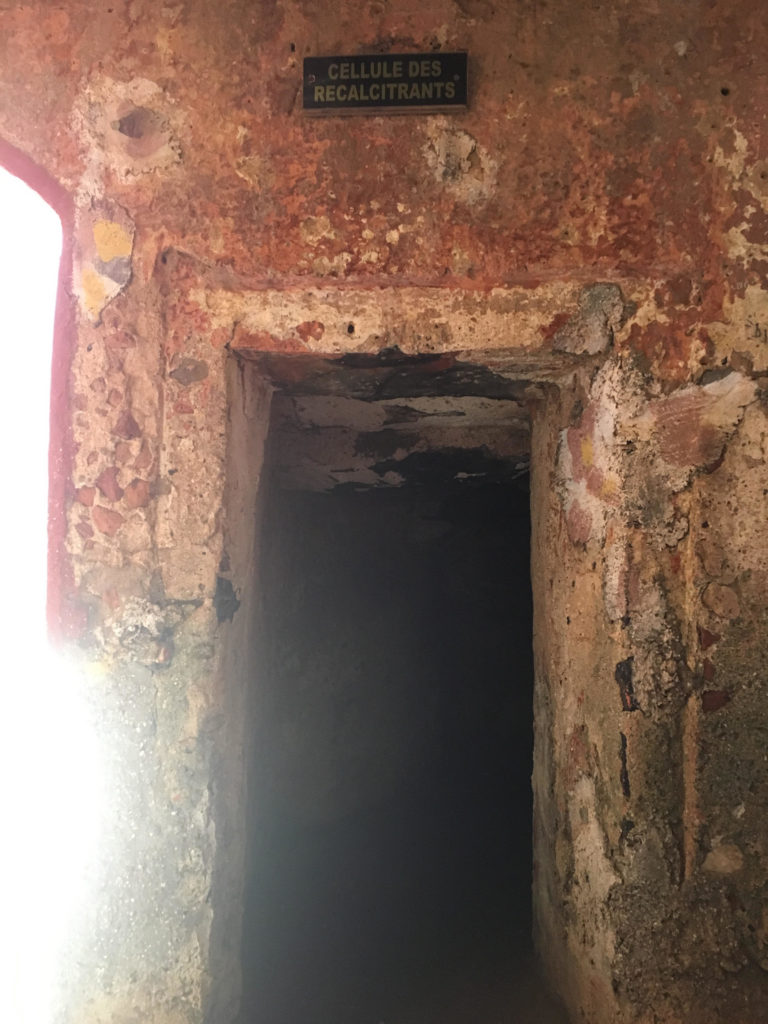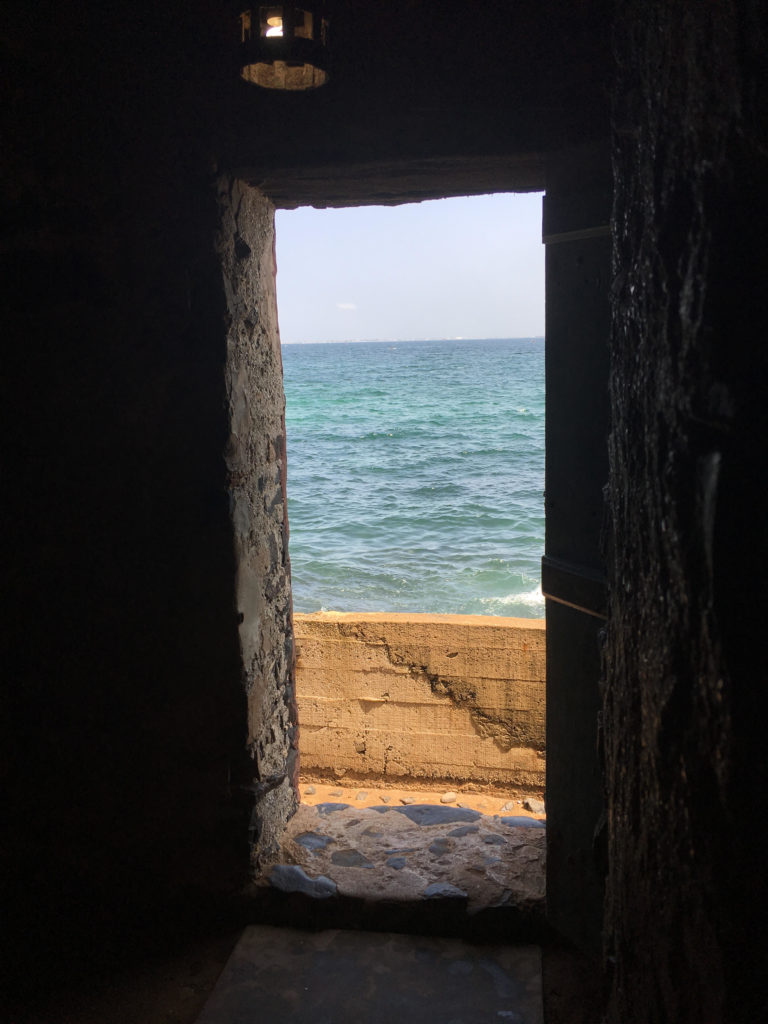Enslaved women
What happened to enslaved women?
After the horrible, shocking experience we spoke about on our previous article, the teenager was like all the other slaves, ready to be abused again or sold. If enslaved women were captured while pregnant or with children, they were abducted from her after the third year of age. At that point, they put kids in an isolated room, ready to be sold.
This room was the only one without chains, but do you know what? It wasn’t for a sense of humanity that they didn’t put any chains here. As the guide said, children grow too fast and it was too expensive to make small chains.
Shark island
Why Gorèe island was called the Shark island?
When slaves got ill (either a man, a woman or a child), there wasn’t time for curing them. So they used the door at the end of the corridor, which you can still see nowadays when you enter the house. It’s a small door facing the ocean and when someone was ill, they just throw them from there to the sharks. It was the guard’s decision to throw the prisoner to the sharks alive or not.
The other rooms
There was the possibility that enslaved women would get pregnant during one of the systematic rapes. Since the raper was a white male, the child was subsequently considered a mixed race; the enslaved women giving birth to this mixed child changed their status to Ladies. The enslaved children also changed their position; once adults, they had the right to possess slaves themselves.
Neither virgins nor mothers
There was then the case when enslaved women were abused, but they won’t get pregnant of their rapers. Their life was destined to remain in that hell circle as long as they stayed alive or their captors didn’t get enough of them.
The punishments
The discipline was maintained using psycho-physical rather than only physical punishments. This wasn’t because the scum captors had a heart, but because the enslaved women and men were considered a simple ‘good’ not to get too damaged. They started using some punishment methods used earlier during the medieval and replicated later in many other circumstances.
1991
When Nelson Mandela visited this House of slaves on Gorèe island in 1991, only one year after he was released from prison, he asked to stay alone for a moment. He entered a small room that was previously used as an isolation room. After leaving that narrow room, they said that he had his eyes red from crying.
The isolation room

The isolation room consisted of a hole in the wall, which wasn’t enough to stay straight or lay down. Let’s get it straight, anything could cause you to be confined inside this horrible hole in the wall. For example, fighting with one of your mates was considered insubordination; now, imagine 15- 20 men closed inside a room. How difficult could had it been not to fight with each other? If you add to this equation that they had one toilet break every 24 hours (still chained to the others), you have an idea of the critical situation they were in.
The Last room
On average, the enslaved women and men remained inside the isolation room for 3 to 5 days. If they didn’t find reason inside that hole, the prisoners arrived at the final stage, thrown inside the so-called Last room.
The prisoners that arrived here, either enslaved women or men, were left with nothing to drink or eat for days. They screamed, and their desperate screams were precisely what the captors wanted to achieve, to put everyone else in line. In a few days, they stopped crying and they began shark food.
The door of no return

We already spoke about this door, which was used to send people to death to the sharks. The same passage was used to embark people on the ships to be sent away and sold elsewhere. The enslaved women and men had to pass on a piece of wood positioned at the edge of the door. Two guards controlled that no one tried to escape (or commit suicide). In fact, since they were all attached to the same chain, it was possible that one person jumping in the water would bring everyone else down.
The travel
During the slave trade to America, the travel would take an average of 7 to 16 weeks. In the Museum now installed in the House of slaves, the data reported that 20 million Africans were deported as slaves and 6 million died of diseases. They esteemed that this number is double if we count the people that died during the travel.
What to do, then?
The only thing I believe we can do is to speak about this genocide as much as we can. Talking about this dark side of human history is the first step to avoid it to repeat the same errors.
We are all humans. Let’s never forget it.
You didn’t read the previous part about the House of slaves in Gorèe island? Read it here.
Do you want to read more travel stories? Go to our Travelling page.
How important is it to read?

Reading is crucial because it improves the way you focus, your memory and your communication skills. Here at Flyingstories, we like to write free stories that can entertain you and help you learn Italian or English.
You can change the website’s language any time you want, just by clicking on the flag. In this way, you can read stories for free in Italian and English.
Do you think you’re not ready for a long story like Souls Alive? Please feel free to read Go back to the future or read our short stories in Italian and English!
Senegal is an endless stretch of red land whose dust clings on your clothes upon your arrival until a few days after your departure, also owing to the shortage of water that prevents people from washing themselves whenever needed. In its capital city, Dakar, in the westernmost corner of Africa, the ex French colony immediately shows an important and equally painful page of its history. It’s the island of Goree, where the slaves were selected and loaded on ships headed to America.
Travel blog
Thanks Edward for your comment. Yes, it is precisely what you’re describing, and thus more than that. If you spent some more time on our website you’d probably seen two articles about the same Gorèe Island you referred to. Have a great day!